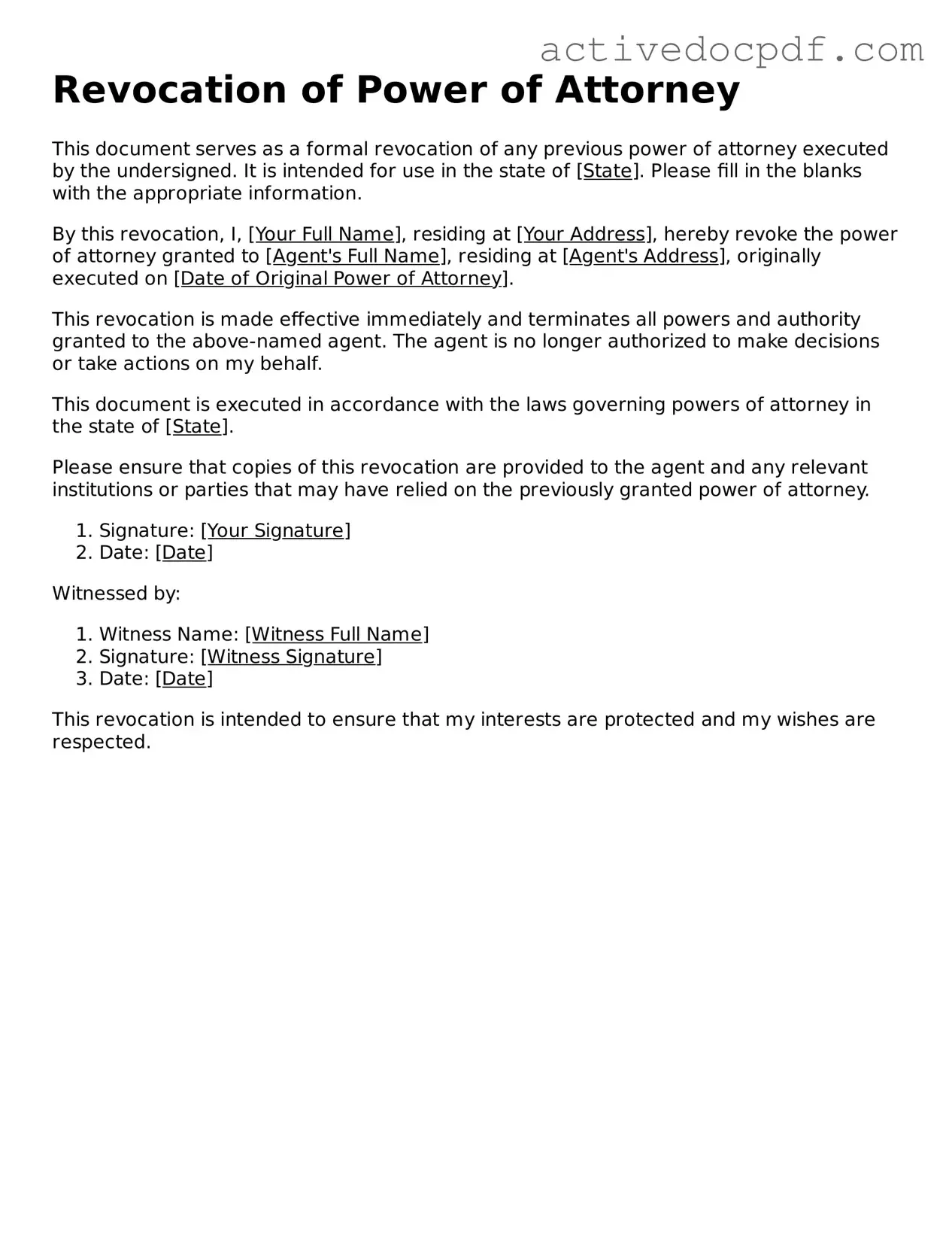A Revocation of Power of Attorney form is a legal document used to cancel or revoke an existing Power of Attorney. This form ensures that the authority granted to the agent is officially terminated, preventing them from making decisions on your behalf.
You should use this form when you no longer wish for your agent to have authority over your affairs. Common situations include:
-
If you have regained capacity and wish to manage your own affairs.
-
If you want to appoint a different agent.
-
If the agent is no longer trustworthy or able to perform their duties.
To complete the form, follow these steps:
-
Clearly identify yourself as the principal.
-
State the date of the original Power of Attorney.
-
Provide the name of the agent you are revoking.
-
Sign and date the form in front of a notary public, if required by your state.
Do I need to notify my agent after revoking their Power of Attorney?
Yes, it is essential to inform your agent that their authority has been revoked. This notification helps prevent any confusion and ensures they do not act on your behalf after the revocation.
Filing is not typically required. However, if your original Power of Attorney was recorded with a court or county office, you should also file the revocation there to ensure it is officially documented.
Can I revoke a Power of Attorney verbally?
While verbal revocation may be legally valid in some situations, it is highly recommended to use a written form. A written revocation provides clear evidence of your intent and can prevent disputes.
What happens if I do not revoke my Power of Attorney?
If you do not revoke your Power of Attorney, your agent will continue to have authority to act on your behalf. This can lead to decisions being made that may not align with your current wishes or best interests.
Can I revoke a Power of Attorney if I am incapacitated?
If you are incapacitated, revoking a Power of Attorney can be challenging. Generally, you must be competent to revoke. If you are unable to do so, consider consulting with a legal professional for guidance on your options.
What if I have multiple Powers of Attorney?
If you have multiple Powers of Attorney, you should revoke each one individually if you wish to terminate their authority. Ensure that the revocation clearly specifies which Power of Attorney is being revoked to avoid confusion.
You can obtain a Revocation of Power of Attorney form from various sources, including:
-
Legal websites that provide templates.
-
Local law offices.
-
State or county government websites.
